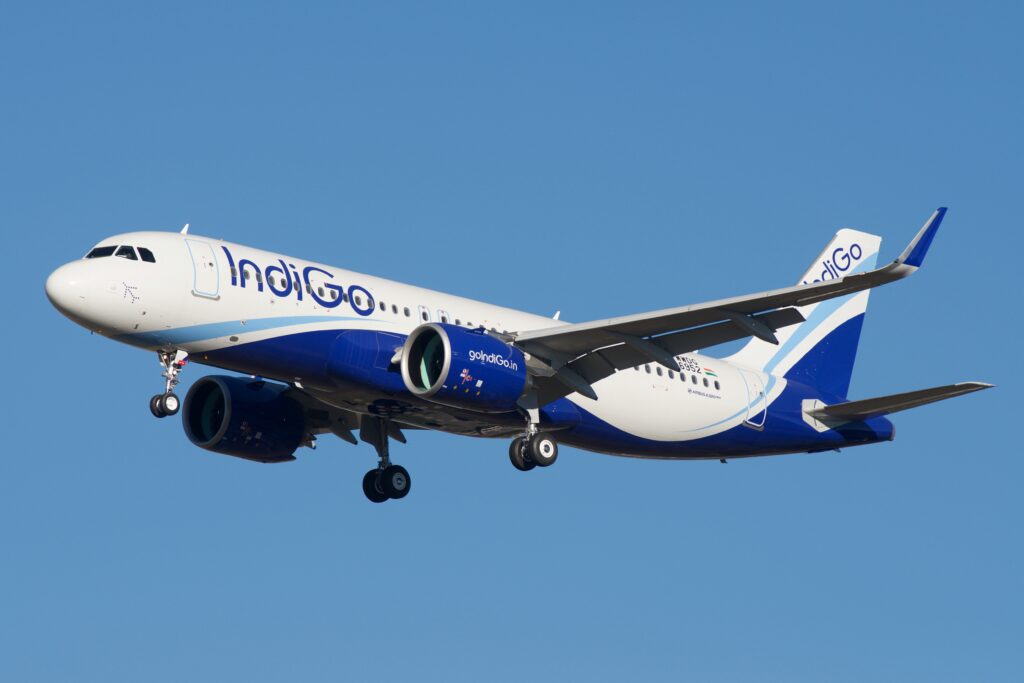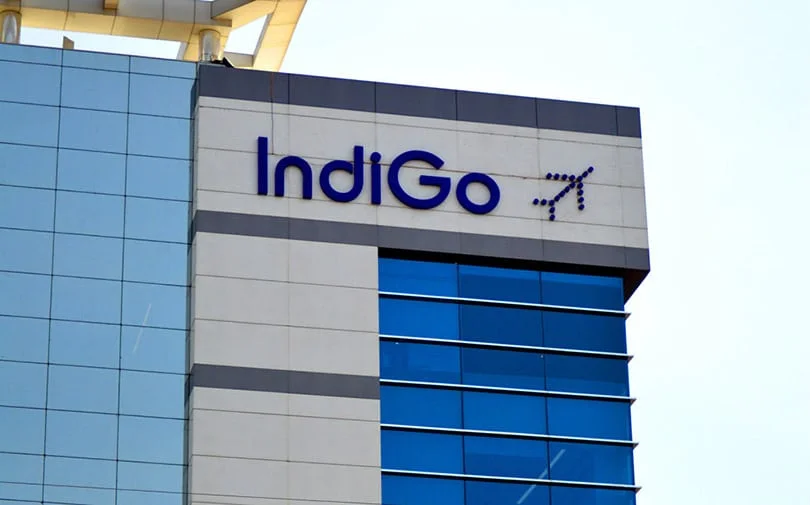
Overview of Indigo LTD: Introduction
In terms of fleet size, passengers carried, and domestic market share, InterGlobe Aviation Ltd., earlier known as Indigo Ltd., is the biggest airline operating in India With its headquarters in Gurgaon, Haryana, the company has transformed the Indian air travel market by enabling mass flying affordability. Established in 2006, Indigo has been rapidly well-known in India’s aviation sector by emphasizing low-cost, no-frills services, which have been rather popular among business and leisure travellers.
Mostly providing internal and international flights, the airline runs an all-Airbus A320 fleet. Thanks to its effective operational strategy, strong brand identification, and sizable client base, it has been able to remain profitable and continue an amazing growth trajectory over years.
History and Development of Indigo Ltd
Rakesh Gangwal and Rahul Bhatia started Indigo with a single goal in mind: to give Indian people low-cost, reasonably quick air travel. Emphasizing the no-frills idea, the airline has kept its expenses low while preserving great operational effectiveness. Starting with just one aircraft in 2006, the company developed quickly in response to the growing domestic aviation industry.
The ascent of indigo coincided with a middle class explosion in India and a demand for reasonably priced air travel choices. The airline’s dedication to dependability and on-time performance over years has helped it to stand out in the cutthroat competition.
Strategy & Core Business Model of Indigo LTD
The affordable company strategy of indigo helps to explain its success. Operating on a no-frills approach, it charges consumers for extras such seat choice, checked-in luggage, and in-flight meals. By doing this, they help to maintain cheap ticket prices, so enabling a greater audience to fly.
The corporation mostly emphasizes on keeping operational expenses under control and maintaining high aircraft use rates. Another vital component of their approach is its all-Airbus A320 fleet. Among the most efficient fleets worldwide, the homogeneity of the fleet reduces training and maintenance costs.

Performance of Indigo Ltd Stock and Market Analysis
Under the ticker “INDIGO,” indigo LTD is listed on the National Stock Exchange (NSE) and Bombay Stock Exchange (BSE) in India. The stock has been a major participant in the Indian stock market, with its performance usually considered as a barometer for the aviation sector in India.
Indigo Stock: Trends and Price History
Since its 2015 public offering (IPO), indigo’s stock price has seen amazing rise. Launched at ₹765 per share, the IPO has experienced notable increases since then thanks in great part to the company’s operational performance as well as the general expansion of the aviation industry in India.
Fuel prices, domestic competition, government legislation, and more general economic conditions have all affected Indigo’s stock price’s many swings over years.
2015-2017:
Strong market performance and Indigo’s supremacy in the home market drove the stock’s consistent climb after its IPO. Effective operations and profitability of the airline helped build investor confidence.
2018-2019:
Rising gas prices and more competition caused the stock to be erratic. Furthermore weighing on the performance of the stock were issues with fleet development and aviation sector regulations.
2020-Present:
The COVID-19 epidemic had a significant effect on the aviation industry, which led to sharp declining stock prices. But with the fall in the epidemic and the return of domestic and international flights, Indigo LTD’s stock price has recovered to reflect investor hope.

Important Factors Affecting the Stock Price of Indigo LTD
The stock price of Indigo Limited is heavily influenced by several elements. Among them are:
Fuel Prices
Every airline’s running expenses mostly consist of fuel. Indirectly, changes in world crude oil prices might affect Indigo’s running expenses. Rising gasoline prices typically pinch margins for low-cost carriers like Indigo, which often results in a drop in profitability and hence, stock price swings.
Competition in the Indian Aviation Sector
There are various domestic and foreign companies providing air transport, hence the Indian aviation business is competitive. New competitors like Air India’s privatization and the emergence of low-cost carriers like SpiceJet and GoAir can put pressure on Indigo’s profitability and market share. Strong rivalry can change investors’ attitude, therefore influencing the performance of the stock.
Political and Economic Conditions
Demand for air travel is shaped in part by general economic conditions including GDP growth rates, disposable income levels, and inflation. Comparatively, political unrest or changes in aviation-related legislation including taxation and government rules might affect the operations of the airline.
On-Time Performance and Customer Contentment
One of the best on-time performance records in the business, indigo has kept a major influence on its brand image. Demand for Indigo flights usually increases with high customer satisfaction and reputation for dependability, so indirectly helping its stock.
Growth into Foreign Markets
A major factor in stock increase is also Indigo’s arrival into foreign markets. Generally speaking, investors see the airline’s increasing revenue and market position as it opens worldwide routes as favorably.
Financial Performance and Important Metrics of Indigo LTD
Income and Profitability
Driven by increasing passenger volume, higher seat occupancy, and improved operational efficiency, Indigo Ltd. has seen robust income rise throughout the years. In the erratic aviation industry, the company has regularly shown profits—a achievement quite exceptional. Following disruptions caused by the COVID-19 epidemic, Indigo has shown in recent quarters a recovery in its income.
2019-2020:
Although the airline reported good revenue, the epidemic caused a notable drop in its earnings.
2021-2022:
Although the epidemic still had an impact, Indigo LTD’s income grew as domestic and international air traffic returned.
2023-Present:
One of the most consistent players in the Indian aviation scene, the airline has seen a consistent comeback with better demand.
Financial Leverage and Debt
Investors may find great interest in the debt levels of Indigo LTD. The aviation sector is capital-intensive, hence airlines usually have debt, especially in terms of acquiring and maintaining aircraft. But, especially in relation to some of its rivals, indigo has well controlled its debt.
Response of Indigo Ltd. to Market Conditions and Challenges
The constant success of Indigo Ltd. depends critically on its capacity to meet obstacles. To keep some income during the COVID-19 epidemic, for example, the airline turned to cargo operations. It also concentrated on cost-cutting strategies and operational efficiency enhancement, which enabled it to withstand the storm more than many other carriers.
Indigo is concentrated on fleet development, new foreign routes, and keeping customer loyalty programs as the aviation sector starts to recover from the epidemic.
Challenges Faced and How the Airline Overcame Them: Indigo LTD
The epidemic COVID-19
The COVID-19 epidemic had a major influence on Indigo Ltd., as every other airline worldwide. Revenues dropped dramatically when both domestic and foreign planes were canceled. The airline claimed large losses in the first quarter of 2020 alone, and its stock price dropped.
Indigo used numerous tactics to control these challenges:
Cost-cutting techniques:
Laying off some staff, delaying aircraft deliveries, and postponing non-essential capital expenditures were among the various actions the airline took to cut its expenses.
Focus on cargo operations:
Indigo looked to freight services to keep cash flow as passenger travel dropped. Across its fleet, the airline started shipping basic commodities including medical supplies.
Enhanced Safety Protocols:
Once air flight resumed, Indigo’s strict safety procedures guaranteed the passengers’ safety, hence increasing consumer confidence.
India’s rising vaccination rate and the resuming of domestic and international flights helped Indigo’s recovery start as constraints relaxed and travel demand steadily recovered.
Variability in fuel prices
Fuel price fluctuation has been yet another major obstacle for Indigo Ltd. Fuel is one of an airline’s biggest running costs; variations in world crude prices directly impact profit margins. For instance:
Rising Energy Prices:
Rising fuel prices force Indigo to pay more running expenses, which could strain profitability.
Depreciation of Money:
Given that oil is valued in USD, any devaluation of the Indian Rupee versus the US Dollar increases the effect of growing petrol costs even more.
Indigo has worked to lessen these effects by:
Hedging Fuel Prices:
The airline uses hedging techniques to lower risk to price swings and lock in future fuel prices.
Efficiency in fleet operations:
Because Indigo is committed to an all-Airbus A320 fleet, it gains from fuel-efficient aircraft, therefore helping to more precisely control fuel costs than rivals.
Strong rivalry in the home market
With several airlines joining the low-cost and full-service categories, the Indian aviation sector has grown ever more competitive. Rivals including SpiceJet, Air India, and GoAir—now renamed GoFirst—have made it more difficult for Indigo to keep its market share.
Still, indigo has been able to withstand because of:
Brand allegiance:
Indigo has a devoted clientele thanks in great part to its reputation for safety, customer service, and timeliness.
Strong fleet use:
Maintaining a high fleet utilization rate helps Indigo to optimize the income produced every aircraft. This strategy enables the airline to overcome the consequences of price war brought about by rivalry.
Cost Leadership:
Even in fierce competition, Indigo’s capacity to keep expenses down and provide consistent services helps it to retain a competitive edge.
Government Policies and Regulatory Obstacles
The aviation industry is closely controlled, hence changes in laws and rules will directly affect airline operations. Indigo’s regulatory issues have included:
Slot Allocation for Airport:
Slot availability has grown to be a significant issue as the volume of flights rises in main Indian airports. At packed airports, indigo has had to bargain for better slots and additional takeoff and landing options.
Taxes and Fees Paid by Government:
Indigo’s bottom line also changes with changes in aviation security costs, fuel taxes, and other government levies.
Notwithstanding these challenges, the airline has been aggressive in advocating favorable policies and keeping industry conformity with regard to rules. It has also spread its activities to reduce sensitivity to legislative changes.
The Growth Strategy and Future Prospect of Indigo LTD
Expanding its fleet, network, and operating efficiency forms the center of Indigo Ltd.’s long-term development plan. Some salient features of its expansion plan are listed below:
Aircraft Orders and Fleet Expansion
Expanding its fleet will be one of Indigo’s key growth-oriented tactics. To keep its low operations costs and satisfy increasing demand, the airline has regularly added new aircraft. Because of their operational efficiency, lower fuel consumption, and economy, the airline mostly flies the Airbus A320 family of aircraft.
Order for a New aircraft:
Indigo has regularly ordered fresh aircraft, and in the next years this trend is projected to be continued. To serve longer local and international routes, the airline has also been investigating possibilities for including more fuel-efficient aircraft, such the Airbus A321XLR.
Global Reach
Although Indigo Ltd. has become somewhat well-known in the home market, future development depends on its global expansion. The airline intends to grow its network to new foreign cities; it already flies to cities including Dubai, Singapore, and Bangkok.
The secret to effective worldwide growth is:
Planning Strategic Routes:
Indigo concentrates on low-competition, highly demand locations. This helps them to use their operational efficiency and create profitable paths.
Alliances and cooperatives:
To improve its connections and reach into new areas, Indigo has been investigating alliances with foreign airlines.
Digital Transformation and Technology Integration
Indigo’s approach now rev lies mostly on technology. Investing in digital solutions helps the airline increase operational efficiency, customer experience, and income control.
Among the major projects are:
Revised online booking system and mobile app:
Offering consumers more smooth booking and flight management experiences, indigo has made notable enhancements to its website and mobile app.
Decisions Based on Data:
Big data analytics helps the airline estimate demand, maximize pricing, and enhance fuel economy.
Initiatives toward Sustainability:
Indigo is emphasizing greener technologies in line with its long-term sustainability plan. Using fuel-efficient planes and investigating alternative fuels will help the airline already pledged to lower its carbon footprints.
Customer-Centric Emphasiveness
Indigo has always been dedicated to provide a customer-first experience, and going forward its approach will revolve mostly around this goal. The airline intends to improve customer service by means of:
Programs for Loyalty:
Creating a better loyalty program will help to both draw in fresh business and keep current ones.
Improved In- Flight Experience:
Though it is a low-cost carrier, Indigo is continuously enhancing its in-flight amenities including food options, entertainment, and seat comfort.
Operational Quality and Cost Control
One of Indigo’s strongest suit is keeping operational excellence. The airline centers on:
On-Time Performance:
Indigo has a major competitive edge since, as of recent years, it has kept one of the finest on-time performance rates in the business.
effective Turnaround Times:
Quick turnaround times of indigo guarantee that aircraft are back in the air faster, so enabling the airline to keep better fleet utilization.
Conclusion
Since its founding in 2006, Indigo Ltd. has advanced a great distance. Originally a little, low-cost carrier, it has expanded to become the biggest airline in India having a remarkable fleet size, market share, and profitability record. Although it is still subject to various macroeconomic and industry-specific elements, including fuel prices, competition, and regulatory obstacles, the stock performance of the company reflects this development.
Looking ahead, Indigo’s approach of fleet expansion, worldwide expansion, cost control, and technical investment prepares them for continuous success. The airline’s strong brand, effective operations, and customer-centric strategy will keep helping it negotiate the difficulties of the ever-changing aviation sector notwithstanding fierce competition and occasional market disruptions.
FAQs
Q.1. Indigo Ltd.’s current stock price is what?
Ans: Market conditions affect Indigo Ltd.’s stock price somewhat regularly. Major stock exchanges including NSE and BSE have most current pricing available for you to review.
Q.2. What are the main elements influencing the stock performance of Indigo?
Ans: Important elements include government rules, market demand, fuel pricing, competition, and operational effectiveness of the company.
Q.3. How have Indigo handled the difficulties the COVID-19 epidemic presents?
Ans: To fit the demands of the epidemic, Indigo has slashed expenses, concentrated on freight services, and guaranteed strict safety standards.
Q.4. Is Indigo doing business abroad?
Ans: Indeed, Indigo has opened lines to various other locations and intends to keep developing its worldwide network.
Q.5. Indigo’s expansion plan is what?
Ans: According to Indigo’s growth plan, fleet expansion, international market entrance, digital transformation, and operational efficiency maintenance all play part.



